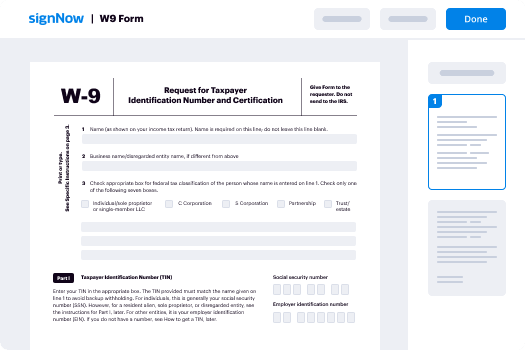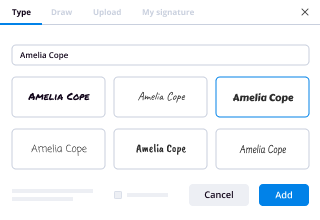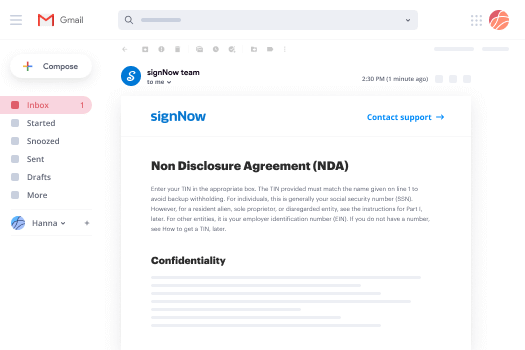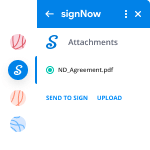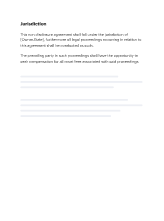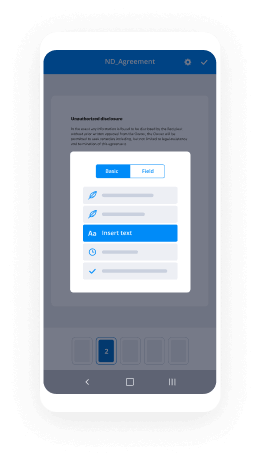BY-LAWS OF (A Mississippi Nonprofit Corporation) ARTICLE I. OFFICES SECTION 1. Principal Office. The principal office of the corporation in the State of
Mississippi shall be located in the City of , County of . The
corporation may have such other offices, either within or without the State of Mississippi, as the
board of directors may designate or as the business of the corporation may require from time to
time.
SECTION 2. Registered Office. The corporation shall continuously maintain in the
State of Mississippi a registered office that may be the same as its principal office, and a
registered agent as required by the Mississippi Nonprofit Corporation Act. The address of the
registered office may be changed from time to time by the board of directors.
ARTICLE II. MEMBERS SECTION 1. Election of Members. The corporation may admit any individual as a
member. An affirmative vote of a majority of the directors shall be required for admission.
Other requirements for admission may be set forth in a resolution adopted by the directors. No
person shall be admitted as a member without his or her consent. Except as provided in the
articles of incorporation or by-laws, the corporation may admit members for no consideration or
for such consideration as is determined by the board of directors.
SECTION 2. Rights and Obligations of Members. Unless the articles of incorporation
or by-laws provide otherwise, each member is entitled to one (1) vote on each matter voted on by
the members. All members shall have the same rights and obligations with respect to voting,
dissolution, redemption and transfer, unless the articles of incorporation or these by-laws
establish classes of membership with different rights or obligations. All members shall have the
Comment [COMMENT1]: This was
dated 2/2/95.Correction made on
7/3/95.(Shotokan never used
this document.)(Change made for
purpose of using this
as a form.)
same rights and obligations with respect to any other matters, except as set forth and authorized
by the articles of incorporation or these by-laws.SECTION 3. Transfer of Membership. Except as set forth or authorized by the articles
of incorporation or these by-laws, no member of the corporation may transfer a membership or
any right arising therefrom.
SECTION 4. Dues, Assessments or Fees. A member may become liable to the
corporation for dues, assessments or fees; provided, however, that an article or by-law provision
or a resolution adopted by the board authorized or imposing dues, assessments or fees does not,
of itself, create liability.
SECTION 5. Resignation of Member. A member may resign at any time by filing a
written resignation with any corporate officer. The resignation of a member does not relieve
the member from any obligations the member may have to the corporation.
SECTION 6. Termination of Membership . No member may be expelled or suspended,
and no membership or memberships may be terminated or suspended except pursuant to the
procedure provided herein carried out in good faith. The affected member must receive not less
than _____________ ( ) days' prior written notice of the expulsion, suspension or termination
and the reasons therefor and an opportunity to be heard, orally or in writing, not less than five
days before the effective date of the expulsion, suspension or termination by the board or a
person or persons authorized by the board to decide that the proposed expulsion, termination or
suspension not take place. Any written notice given by mail must be given by first-class or
certified mail sent to the last address of the member shown on the corporation's records. Any
proceeding challenging an expulsion, suspension or termination, including a proceeding in which
defective notice is alleged, must be commenced within ____ (1) year after the effective date of
the expulsion, suspension or termination. A member who has been expelled or suspended may
be liable to the corporation for dues, assessments or fees.
SECTION 7. Repurchase of Memberships. The corporation may purchase the
membership of a member who resigns or whose membership is terminated for the amount and
pursuant to the conditions authorized by the board of directors. No payment shall be made in
violation of applicable law.
-3- ARTICLE III. MEETINGS OF MEMBERS SECTION 1. Annual Meeting . The annual meeting of the members shall be held on the
_____ (number) ___________ (day of week) in the month of _______________, in each year,
beginning with the year , at the hour of ___________ p.m., or such other time and
date as may be determined by the directors, for the purpose of electing directors and for the
transaction of such other business as may properly come before the meeting. At the annual
meeting, the executive secretary shall report on the activities and financial condition of the
corporation and the members shall consider and act upon such other matters as may be raised
consistent with these by-laws. If the day fixed for the annual meeting shall be a legal holiday in
the State of Mississippi, such meeting shall be held on the next succeeding business day.
If the election of directors shall not be held on the day designated herein for any
annual meeting of the members, or at any adjournment thereof, the board of directors shall cause
the election to be held at a special meeting of the members as soon thereafter as conveniently
may be. The failure to hold an annual meeting at the time stated in or fixed in accordance with
the corporation's by-laws does not affect the validity of any corporate action.SECTION 2. Special Meetings. The corporation shall hold a special meeting of
members (1) on call of its board of directors, (2) the executive secretary, or (3) if the holders of
at least ______ ( %) percent of the voting power sign, date and deliver to any corporate
officer one or more written demands for the meeting describing the purpose or purposes for
which it is to be held. The close of business on the _____ day before delivery of the demand for
a special meeting to any corporate officer is the record date for the purpose of determining
whether the ______ ( %) percent requirement of this section has been met. If notice for a
special meeting demanded under this section is not given pursuant to these by-laws within
_________ ( ) days after the date the written demand or demands are delivered to a corporate
officer, regardless of any other requirements of Article III, Section 3, of these by-laws, a person
signing the demand or demands may set the time and place of the meeting and give notice
pursuant to Article III, Section 4.
-4- SECTION 3. Place of Meeting. The board of directors may designate any place, either
in or out of the State of Mississippi, for any annual meeting or for any special meeting of
members. A valid waiver of notice signed by all members entitled to notice may designate any
place, either in or out of the State of Mississippi, as the place for any annual meeting or for any
special meeting of members. Unless the notice of the meeting states otherwise, members'
meetings shall be held at the corporation's principal office.
SECTION 4. Notice of Meeting . The corporation shall notify its members of the place,
date and time of each annual and special meeting of members no fewer than _________ ( ) (or
if notice is mailed by other than first-class or registered mail, _________ ( ) nor more than
______
( ) days before the meeting date. Unless applicable law or the articles of incorporation require
otherwise, the corporation shall give notice only to members entitled to vote at the meeting.
Notice of an annual meeting must include a description of the matter or matters
which must be approved by the members if such notice is required by applicable law. Notice of
a special meeting must include a description of the matter or matters for which the meeting is
called. Only those matters that are within the purpose or purposes described in the meeting
notice may be conducted at a special meeting of members.Unless these by-laws require otherwise, if an annual or special meeting of
members is adjourned to a different date, time or place, notice need not be given of the new date,
time or place if the new date, time or place is announced at the meeting before adjournment. If a
new record date for the adjourned meeting is or must be fixed under applicable law or Article III,
Section 5, of these by- laws, however, notice of the adjourned meeting must be given under this
section to the members of record as of the new record date.When giving notice of an annual or special meeting of members, the corporation
shall give notice of a matter a member intends to raise at the meeting if: (1) requested in writing
to do so by a person entitled to call a special meeting; and (2) the request is received by the
-5- executive secretary of the corporation at least _____ ( ) days before the corporation gives
notice of the meeting.
SECTION 5. Closing of Transfer Books or Fixing of Record Date. The board of
directors of the corporation may fix a date as the record date for determining the members
entitled to notice of a members' meeting, to vote at a members' meeting, or to exercise any rights
in respect of any other lawful action. A record date may not be more than __________ ( )
days before the meeting or action requiring a determination of members occurs. If no such
record date is fixed, members at the close of business on the business day preceding the day on
which the meeting is held, are entitled to notice of the meeting; members on the date of the
meeting who are otherwise eligible to vote are entitled to vote at the meeting; and members at
the close of business on the day on which the board adopts the resolution to the exercise of any
rights in respect of any other lawful action, or the _____
( ) day prior to the date of such other action, whichever is later, are entitled to exercise such
rights. A determination of members entitled to notice of or to vote at a membership meeting is
effective for any adjournment of the meeting unless the board of directors fixes a new date for
determining the right to notice or the right to vote, which it must do if the meeting is adjourned
to a date more than _________ ( ) days after the record date for determining members
entitled to notice of the original meeting.
SECTION 6. Voting Lists. After fixing a record date for a notice of a meeting, the
corporation shall prepare an alphabetical list of the names of all its members who are entitled to
notice of the meeting. The list must show the address and number of votes each member is
entitled to vote at the meeting.
The list of members must be available for inspection by any member for the
purpose of communication with other members concerning the meeting, beginning ______ (
) business days after notice is given of the meeting for which the list was prepared and
continuing through the meeting, at the corporation's principal office or at a reasonable place
identified in the meeting notice in the city where the meeting will be held. A member, a
member's agent, or his attorney is entitled, on written demand, to inspect and, subject to the
-6- requirements of applicable law, to copy the list at a reasonable time and at the member's expense,
during the period it is available for inspection. The corporation shall make the list of members
available at the meeting, and any member, a member's agent, or his attorney is entitled to inspect
the list at any time during the meeting or any adjournment.SECTION 7. Quorum. Unless applicable law, the articles of incorporation or these
by-laws provide for a higher or lower quorum, ________________ ( %) of the votes entitled
to be cast on a matter must be represented at a meeting of members to constitute a quorum on
that matter. Unless one-third or more of the voting power is present in person or by proxy, the
only matters that may be voted upon at an annual meeting of members are those matters that are
described in the meeting notice. If less than a majority of the outstanding shares are represented
at a meeting, a majority of the shares so represented may adjourn the meeting from time to time
without further notice except as may be required by Article III, Section 4, of these by-laws or by
applicable law. At such adjourned meeting at which a quorum shall be present or represented,
any business may be transacted which might have been transacted at the meeting as originally
noticed.
SECTION 8. Proxies. Unless the articles of incorporation or these by-laws prohibit or
limit proxy voting, a member may appoint a proxy to vote or otherwise act for the member by
signing an appointment form either personally or by an attorney-in-fact. An appointment of a
proxy is effective when received by the secretary or other officer or agent authorized to tabulate
votes. An appointment is valid for _______ ( ) months unless a different period is expressly
provided in the appointment form; provided, that no proxy shall be valid for more than three
years from its date of execution. An appointment of a proxy is revocable by the member.
The death or incapacity of the member appointing a proxy does not affect the
right of the corporation to accept the proxy's authority unless notice of the death or incapacity is
received by the secretary or other officer or agent authorized to tabulate votes before the proxy
exercises authority under the appointment. Appointment of a proxy is revoked by the person
appointing the proxy (1) attending any meeting and voting in person; or (2) signing and
-7- delivering to the secretary or other officer or agent authorized to tabulate proxy votes either a
writing stating that the appointment of the proxy is revoked or a subsequent appointment form.Subject to applicable law and any express limitation on the proxy's authority
appearing on the face of the appointment form, the corporation is entitled to accept the proxy's
vote or other action as that of the member making the appointment.SECTION 9. Voting of Members. Except as provided below or unless the articles of
incorporation or these by-laws provide otherwise, each member is entitled to one vote on each
matter voted on by the members. Unless applicable law, the articles of incorporation or these
by-laws require a greater vote, if a quorum is present, the affirmative vote of the votes
represented and voting (which affirmative votes also constitute a majority of the required
quorum) is the act of the members. Unless otherwise provided in the articles of incorporation or
these by-laws, directors are elected by a plurality of the votes cast by the members entitled to
vote in the election at a meeting at which a quorum is present.
SECTION 10. Informal Action by Shareholders; Ballots.(a) Unless limited or prohibited by the articles of incorporation or these by-laws,
action required or permitted by applicable law to be approved by the members may be approved
without a meeting of members if the action is approved by members holding at least
___________ ( %) of the voting power. The action must be evidenced by one or more consents describing
the action taken, signed by those members representing at least _________ ( %) of the voting
power, and delivered to the corporation for inclusion in the minutes or filing with the corporate
records. If not otherwise determined under applicable law, the record date for determining
members entitled to take action without a meeting is the date the first member signed such
consent. A consent signed under this section has the effect of a meeting vote and may be
described as such in any document filed with the Secretary of State. Written notice of member
approval pursuant to this section shall be given to all members who have not signed the written
-8- consent. If written notice is required, member approval pursuant to this section shall be effective
_________ ( ) days after such written notice is given.(b) Except as provided below and unless prohibited or limited by the articles of
incorporation or these by-laws, any action which may be taken at any annual or special meeting
of members may be taken without a meeting if the corporation delivers a written ballot to every
member entitled to vote on the matter. The written ballot shall (1) set forth each proposed
action; and (2) provide an opportunity to vote for or against each proposed action. Approval by
written ballot pursuant to this section shall be valid only when the number of votes cast by ballot
equals or exceeds the quorum required to be present at a meeting authorizing the action, and the
number of approvals equals or exceeds the number of votes that would be required to approve
the matter at a meeting at which the total number of votes cast was the same as the number of
votes cast by ballot. All solicitations for votes by written ballot shall (i) indicate the number of
responses needed to meet the quorum requirements; (ii) state the percentage of approvals
necessary to approve each matter other than election of directors; and (iii) specify the time by
which a ballot must be received by the corporation in order to be counted. Except as otherwise
provided in the articles of incorporation or these by-laws, a written ballot may not be revoked. SECTION 11. Corporation's Acceptance of Votes. If the name signed on a vote,
consent, waiver or proxy appointment corresponds to the name of a member, the corporation, if
acting in good faith, is entitled to accept the vote, consent, waiver or proxy appointment and give
it effect as the act of the member.
If the name signed on a vote, consent, waiver or proxy appointment does not
correspond to the name of a member, the corporation, if acting in good faith, is nevertheless
entitled to accept the vote, consent, waiver or proxy appointment and give it effect as the act of
the member if (1) the name signed purports to be that of an administrator, executor, guardian or
conservator representing the member, and, if the corporation requests, evidence of fiduciary
status acceptable to the corporation has been presented with respect to the vote, consent, wavier
or proxy appointment; (2) the name signed purports to be that of a receiver or trustee in
bankruptcy of the member, and, if the corporation requests, evidence of this status acceptable to
-9- the corporation has been presented with respect to the vote, consent, waiver or proxy
appointment; (3) the name signed purports to be that of a pledgee, beneficial owner or attorney-
in-fact of the member, and, if the corporation requests, evidence acceptable to the corporation of
the signatory's authority to sign for the member has been presented with respect to the vote,
consent, waiver or proxy appointment; or (4) two or more persons hold the membership as
cotenants or fiduciaries, and the name signed purports to be the name of at least one of the
co-holders and the person signing appears to be acting on behalf of the co-owners. Unless the
articles of incorporation provide otherwise, if a membership stands of record in the names of two
or more persons, their acts with respect to voting shall have the following effect: (i) if only one
votes, such act binds all, and (ii) if more than one votes, the vote shall be divided on a pro-rata
basis.The corporation is entitled to reject a vote, consent, waiver or proxy appointment if the
secretary or other officer or agent authorized to tabulate votes, acting in good faith, has
reasonable basis for doubt about the validity of the signature on it or about the signatory's
authority to sign for the member. ARTICLE IV. BOARD OF DIRECTORS SECTION 1. General Powers. Except as provided by applicable law or in the articles
of incorporation, all corporate powers shall be exercised by or under the authority of, and the
affairs of the corporation managed under the direction of, its board of directors.
SECTION 2. Number, Election, Tenure and Qualifications . The number of directors
of the corporation shall be not less than two (2) nor more than ten (10). All the directors (except
the initial directors) shall be elected at the first annual meeting of members, and at each annual
meeting thereafter, unless the articles of incorporation or by-laws provide some other time or
method of election or provide that some of the directors are appointed by some other person or
designated. The terms of the initial directors of the corporation expire at the first annual
members' meeting at which directors are elected. In the absence of any term specified in the
articles, the term of each director shall be one year. A decrease in the number of directors or
term of offices does not shorten an incumbent director's term. Except as otherwise provided in
-10 - the articles of incorporation or these by-laws, the term of a director filling a vacancy in the office
of a director elected by members expires at the next election of directors by members, and the
term of a director filling any other vacancy expires at the end of the unexpired term which such
director is filling. Despite the expiration of a director's term, the director continues to serve until
the director's successor is elected, designated or appointed and qualifies, or until there is a
decrease in the number of directors. A director must be an individual.SECTION 3. Resignation of Directors; Removal of Directors by Members . A
director may resign at any time by delivering written notice to the board of directors, its
presiding officer or to the secretary. A resignation is effective when the notice is effective unless
the notice specifies a later effective date. If a resignation is made effective at a later date, the
board of directors may fill the pending vacancy before the effective date if the board of directors
provides that the successor does not take office until the effective date.
The members may remove one or more directors elected by them without cause.
A director may be removed as provided above only if the number of votes cast to remove the
director would be sufficient to elect the director at a meeting to elect directors. A director
elected by members may be removed by the members only at a meeting called for the purpose of
removing the director, and the meeting notice must state that the purpose, or one of the purposes,
of the meeting is removal of the director.An entire board of directors may be removed under this section.The board of directors of a corporation may remove a director without cause who
has been elected by the board by the vote of two-thirds of the directors then in office or such
greater number as is set forth in the articles of incorporation or these by-laws.If at the beginning of a director's term on the board, the articles of incorporation
of these by-laws provide that the director may be removed for missing a specified number of
board meetings, the board may remove the director for failing to attend the specified number of
meetings. The director may be removed only if a majority of the directors then in office vote for
the removal.
-11 - Except as otherwise provided in the articles of incorporation or these by-laws, an
appointed director may be removed without cause by the person appointing the director. The
person removing the director shall do so by giving written notice of the removal to the director
and either the presiding office of the board or the corporation's executive secretary. A removal is
effective when the notice is effective unless the notice specifies a future effective date.SECTION 4. Regular Meetings. Unless the articles of incorporation or these by-laws
provide otherwise, a regular meeting of the board of directors shall be held without other notice
than this by-law immediately after, and at the same place as, the annual meeting of members.
SECTION 5. Special Meetings. Special meetings of the board of director may be called
by or at the request of the executive secretary or any two directors. Unless the articles of
incorporation or these by-laws provide for a longer or shorter period, special meetings of the
board of directors must be preceded by at least two days' notice of the date, time and place of the
meeting. If no place for the meeting has been designated in the notice, the meeting shall be held
at the principal office of the corporation. The notice need not describe the purpose of the special
meeting unless required by the articles of incorporation or these by-laws.
SECTION 6. Place of Meetings. The board of directors may hold regular or special
meetings in or out of this state.
SECTION 7. Quorum. Except as otherwise provided by applicable law, the articles of
incorporation or these by-laws, a quorum of the board of directors consists of a majority of the
directors in office immediately before the meeting begins. If less than such number necessary
for a quorum is present at a meeting, a majority of the directors present may adjourn the meeting
from time to time without further notice.
SECTION 8. Manner of Acting. If a quorum is present when a vote is taken, the
affirmative vote of a majority of directors present is the act of the board of directors unless
-12 - applicable law, the articles of incorporation or these by-laws require the vote of a greater number
of directors.SECTION 9. Action Without a Meeting. Unless the articles of incorporation or these
by-laws provide otherwise, action required or permitted to be taken at a board of directors'
meeting may be taken without a meeting if the action is taken by all members of the board. The
action must be evidenced by one or more written consents describing the action taken, signed by
each director, and included in the minutes or filed with the corporate records reflecting the action
taken. Action taken under this section is effective when the last director signs the consent, unless
the consent specifies a different effective date. Such a consent has the effect of a meeting vote
and may be descried as such in any document.
SECTION 10. Vacancies. Unless the articles of incorporation or these by-laws provide
otherwise, and except as provided below, if a vacancy occurs on the board of directors, including
a vacancy resulting from an increase in the number of directors, (i) the members, if any, may fill
the vacancy, (ii) the board of directors may fill the vacancy, or (iii) if the directors remaining in
office constitute fewer than a quorum of the board, they may fill the vacancy by the affirmative
vote of a majority of all the directors remaining in office. Unless the articles of incorporation or
these by-laws provide otherwise, if the vacant office was held by an appointed director, only the
person who appointed the director may fill the vacancy. A vacancy that will occur at a specific
later date (by reason of a resignation effective at a later date or otherwise) may be filled before
the vacancy occurs, but the new director may not take office until the vacancy occurs.
SECTION 11. Compensation. Unless the articles of incorporation or these by-laws
provide otherwise, the board of directors may fix the compensation of directors. By resolution of
the board of directors, each director may be paid his expenses, if any, of attendance at each
meeting of the board of directors, and may be paid a stated salary as a director or a fixed sum for
attendance at each meeting of the board of directors or both. No such payment shall preclude
any director from serving the corporation in any other capacity and receiving compensation
therefor.
-13 - SECTION 12. Executive and Other Committees . Unless prohibited or limited by the
articles of incorporation or these by-laws, the board of directors may create an executive
committee and one or more other committees of the board and appoint members of the board of
directors to serve on them. Each committee shall have two or more members who serve at the
pleasure of the board of directors. The creation of a committee and appointment of directors to it
must be approved by the greater of: (1) a majority of all directors in office when the action is
taken; or (2) the number of directors required by the articles of incorporation or these by-laws to
take action. To the extent specified by the board of directors or in the articles of incorporation or
these by -laws, each committee of the board of directors may exercise the authority of the board
of directors. A committee may not, however, authorize distributions; approve or recommend to
members dissolution, merger or the sale, pledge or transfer of all or substantially all of the
corporation's assets; elect, appoint or remove directors or fill vacancies on the board of directors
or on any of its committees; or adopt, amend, or repeal the articles of incorporation or by-laws.
Provisions of these by-laws governing meetings, action without meetings, notice and waiver of
notice, and quorum and voting requirements of the board of directors, apply to committees of the
board of director and their members as well.
SECTION 13. Participation by Telephonic or Other Means. Unless the articles of
incorporation or these by-laws provide otherwise, the board of directors may permit any or all
directors to participate in a regular or special meeting by, or conduct the meeting through the use
of, any means of communication by which all directors participating may simultaneously hear
each other during the meeting. A director participating in a meeting by this means is deemed to
be present in person at the meeting.
ARTICLE V. OFFICERS SECTION 1. Number. The officers of the corporation shall be an executive secretary
and a treasurer, each of whom shall be elected by the board of directors. Such other officers,
assistant officers and agents as may be deemed necessary may be elected or appointed by the
board of directors. Any two or more offices may be held by the same person.
SECTION 2. Election and Term of Officers. The Officers of the corporation to be
elected by the board of directors shall be elected annually by the board of directors at the regular
-14 - meeting of the board of directors. If the election of officers shall not be held at such meeting,
such election shall be held as soon thereafter as conveniently may be. Each officer shall
continue to serve until his successor is elected and qualifies or until his death or until he shall
resign or shall have been removed in the manner hereinafter provided.SECTION 3. Resignation or Removal of Officers and Agents.(a) An officer may resign at any time by delivering notice to the corporation. A
resignation is effective when the notice is delivered unless the notice specifies a later effective
date.(b) The board of directors may remove any officer at any time with or without
cause. An officer's removal does not affect the officer's contract rights, if any, with the
corporation. An officer's resignation does not affect the corporation's contract rights, if any, with
the officer. The appointment of an officer does not of itself create contract rights between the
officer and the corporation.SECTION 4. Vacancies. A vacancy in any office because of death, resignation,
removal, disqualification, or otherwise, may be filled by the board of directors for the unexpired
portion of the term. If a resignation is made effective at a later date and the corporation accepts
the future effective date, the board of directors may fill the pending vacancy before the effective
date if the board of directors provides that the successor does not take office until the effective
date.
SECTION 5. Executive Secretary. The executive secretary shall be the principal
executive officer of the corporation and, subject to the control of the board of directors, shall
have general supervision and control of the business and affairs of the corporation. He shall,
when present, preside at all meetings of the members and of the board of directors. He may sign,
with any other proper officer of the corporation authorized by the board of directors, certificates
for membership in the corporation, any deeds, mortgages, bonds, contracts, or other instruments
which the board of directors has authorized to be executed, except in cases where the signing and
-15 - execution thereof shall be expressly delegated by the board of directors or by these by-laws to
some other officer or agent of the corporation, or shall be required by law to be otherwise signed
or executed, and in general he shall perform all duties incident to the office of president of a
corporation and such other duties as may be prescribed by the board of directors from time to
time.The executive secretary shall also (a) prepare and keep the minutes of the
directors' and members' meetings in one or more books provided for that purpose; (b) see that all
notices are duly given in accordance with the provisions of these by-laws or as required by law;
(c) be custodian of the corporate records and of any seal of the corporation, and see that any such
seal of the corporation is affixed to all documents the execution of which on behalf of the
corporation under its seal is duly authorized; (d) authenticate records of the corporation; (e) keep
a register of the post office address of each member which shall be furnished to the secretary by
such member; (f) sign certificates of membership in the corporation, the issuance of which shall
have been authorized by resolutions of the board of directors; and (g) in general perform all
duties incident to the office of secretary and such other duties as from time to time may be
assigned to him by the president or by the board of directors.SECTION 6. Treasurer. The treasurer shall: (a) have charge and custody of and be
responsible for all funds and securities of the corporation; (b) receive and give receipts for
monies due and payable to the corporation from any source whatsoever, and deposit all such
monies in the name of the corporation in such banks, trust companies or other depositories as
shall be selected in accordance with these by-laws; and (c) in general perform all of the duties
incident to the office of treasurer and such other duties as from time to time may be assigned to
him by the executive secretary or by the board of directors. If required by the board of directors,
the treasurer shall give a bond for the faithful discharge of his duties in such sum and with such
surety or sureties as the board of directors shall determine.
SECTION 7. Compensation. The board of directors may fix the compensation of the
officers. No such payment shall preclude any officer from serving the corporation in any other
capacity and receiving compensation therefor.
-16 - ARTICLE VI. CONTRACTS, LOANS, CHECKS AND DEPOSITS SECTION 1. Contracts. The board of directors may authorize any officer or officers, or
agent or agents, to enter into any contract or execute and deliver any instrument in the name of
and on behalf of the corporation, and such authority may be general or confined to specific
instances.
SECTION 2. Loans of the Corporation; Loans to Officers and Directors.(a) No loans shall be contracted on behalf of the corporation and no evidences of
indebtedness shall be issued in its name unless authorized by a resolution of the board of
directors. Such authority may be general or confined to specific instances.(b) The corporation may not lend money to or guarantee the obligation of a
director or officer of the corporation.SECTION 3. Checks, Drafts, Etc . All checks, drafts or other orders for the payment of
money, notes or other evidences of indebtedness issued in the name of the corporation, shall be
signed by such officer or officers, or agent or agents of the corporation and in such manner as
shall from time to time be determined by resolution of the board of directors.
SECTION 4. Deposits. All funds of the corporation not otherwise employed shall be
deposited from time to time to the credit of the corporation in such banks, companies or other
depositories as the board of directors may select.
ARTICLE VII. CERTIFICATES OF MEMBERSHIP SECTION 1. Certificates of Membership. The board of directors may provide for the
issuance of certificates evidencing membership in the corporation, which shall be in such form as
-17 - may be determined by the board of directors. Such certificates shall be signed (either manually
or in facsimile) by the executive secretary or by such other officers designated in the by-laws or
by the board of directors so to do, and may be sealed with the corporate seal. If the person who
signed (either manually or in facsimile) a share certificate no longer holds office when the
certificate is issued, the certificate is nevertheless valid.All certificates evidencing membership shall be consecutively numbered or
otherwise identified. The name and address of each member and the date of issuance of the
certificate shall be entered on the records of the corporation. In the case of a lost, destroyed, or
mutilated certificate, a new one may be issued therefor upon such terms and conditions as the
board of directors may prescribe.SECTION 2. Issuance of Certificates. When a member has been elected to
membership and has paid any initiation fee and dues that may then be required, a certificate of
membership shall be issued in his name and delivered to him by the secretary, if the board of
directors shall have provided for the issuance of certificates of membership under the provisions
of Section 1 of Article VII.
ARTICLE VIII. INDEMNIFICATION SECTION 1. Right of Indemnity. The corporation may indemnify its officers and
directors to the fullest extent permitted under applicable law.
SECTION 2. Right of Corporation to Insure. The corporation may purchase and
maintain insurance on behalf of an individual who is or was a director, officer, employee or
agent of the corporation, or who, while a director, officer, employee or agent of the corporation,
is or was serving at the request of the corporation as a director, officer, partner, trustee, employee
or agent of another foreign or domestic corporation, partnership, joint venture, trust, employee
benefit plan or other enterprise, against liability asserted against or incurred by him in that
-18 - capacity or arising from his status as a director, officer, employee or agent, whether or not the
corporation would have power to indemnify him against such liability under applicable law. ARTICLE IX. NOTICE Notice may be oral or written. Notice may be communicated in person, by telephone,
telegraph, telefax, or other form of wire or wireless communication, or by mail or private carrier.
If these forms of personal notice are impracticable, notice may be communicated by a newspaper
of general circulation in the area where published, or by radio, television or other form of public
broadcast communication.Written notice, if in a comprehensible form, is effective at the earliest of the following:(1)When received;(2)Five days after its deposit in the United States mail, as evidenced by the postmark,
if mailed correctly addressed and with first-class postage affixed;(3)On the date shown on the return receipt, if sent by registered or certified mail,
return receipt requested, and the receipt is signed by or on behalf of the addressee;(4)_____________ ( ) days after its deposit in the United States mail, as
evidenced by the postmark, if mailed correctly addressed and with other than
first-class, registered or certified postage affixed.
Written notice is correctly addressed to a member if addressed to the member's address
shown in the corporation's current list of members. Oral notice is effective when communicated
if communicated in a comprehensible manner.A written notice or report delivered as part of a newsletter, magazine, or other publication
regularly sent to members shall constitute a written notice or report if addressed or delivered to
-19 - the member's address shown in the corporation's current list of members, or in the case of
members who are residents of the same household and who have the same address in the
corporation's current list of members, if addressed or delivered to one of such members, at the
address appearing on the current list of members.Written notice is correctly addressed to a domestic or foreign corporation (authorized to
transact business in this state), other than in its capacity as a member, if addressed to its
registered agent or to its secretary at its principal office shown in its most recent status report or,
in the case of a foreign corporation that has not yet delivered a status report, in its application for
a certificate of authority.If applicable law prescribes notice requirements for particular circumstances, those
requirements govern. If the articles of incorporation or these by-laws prescribe notice
requirements not inconsistent with this section or other provisions of applicable law, those
requirements govern. ARTICLE X. WAIVER OF NOTICE; ASSENT TO ACTIONS A member or director of the corporation may waive any notice required by applicable
law, the articles of incorporation or these by-laws, before or after the date and time stated in the
notice. Except as provided below, the waiver must be in writing, be signed by the member or
director entitled to the notice, and delivered to the corporation for inclusion in the minutes or
filing with the corporate records.A director's attendance at or participation in a meeting waives any required notice to him
of the meeting unless the director at the beginning of the meeting (or promptly upon his arrival)
objects to holding the meeting or transacting business at the meeting and does not thereafter vote
for or assent to action taken at the meeting. A member's attendance at a meeting (i) waives
objection to lack of notice or defective notice of the meeting unless the member at the beginning
of the meeting objects to holding the meeting or transacting business at the meeting, and (ii)
waives objection to consideration of a particular matter at the meeting that is not within the
-20 - purpose or purposes described in the meeting notice, unless the member objects to considering
the matter when it is presented.A director who is present at a meeting of the board of directors or a committee of the
board of directors when corporate action is taken is deemed to have assented to the action taken
unless (1) he objects at the beginning of the meeting, or promptly upon his arrival, to holding it
or transacting business at the meeting; (2) his dissent or abstention from the action taken is
entered in the minutes of the meeting; or (3) he delivers written notice of his dissent or
abstention to the presiding officer of the meeting before its adjournment or to the corporation
immediately after adjournment of the meeting. The right of dissent or abstention shall not be
available to a director who votes in favor of the action taken. ARTICLE XI. FISCAL YEAR The fiscal year of the corporation shall begin on the first day of January and end on the
thirty-first day of December in each year. ARTICLE XII. FEES AND DUES SECTION 1. Initiation Fees and Annual Dues. The board of directors may determine
from time to time the amount of the initiation fee, if any, and the annual dues payable to the
corporation by members of each class.
SECTION 2. Payment of Dues. Dues shall be payable in advance on the tenth day of
January in each fiscal year. Dues of a new member shall be prorated from the first day of the
month in which such new member is elected to membership, for the remainder of the fiscal year
of the corporation.
SECTION 3. Default and Termination of Membership. When any member of any
class shall be in default in the payment of dues for a period of three months from the beginning
-21 - of the fiscal year or period for which such dues became payable, his membership may thereupon
be terminated by the board of directors in the manner provided in these by-laws. ARTICLE XIII. CORPORATE SEAL The board of directors may provide a corporate seal which, if provided, shall be circular
in form and shall have inscribed thereon the name of the corporation, the state of incorporation,
and the words "Corporate Seal." ARTICLE XIV. AMENDMENTS (a) Unless applicable law, the articles of incorporation, these by-laws, the members
(acting pursuant to subsection (b) of this section), or the board of directors (acting pursuant to
subsection (c) of this section) require a greater vote, an amendment to this corporation's by-laws,
to be adopted, must be approved:(1)By the board if the amendment does not relate to the number of directors,
the composition of the board, the term of office of directors, or the method
or way in which directors are elected or selected; and(2)By the members of two-thirds of the votes cast or a majority of the voting
power, whichever is less.(b) The members may condition the amendment's adoption on its receipt of a higher
percentage of affirmative votes or on any other basis.(c) If the board initiates an amendment to the by-laws or board approval is required by
subsection (a) of this section to adopt an amendment to the by-laws, the board may condition the
amendments's adoption on receipt of a higher percentage of affirmative votes or on any other
basis.
-22 - (d) If the board or the members seek to have the amendment approved by the members at
a membership meeting, the corporation shall give notice to its members of the proposed
membership meeting in writing in accordance with Section 4 of Article III. The notice must also
state that the purpose, or one of the purposes, of the meeting is to consider the proposed
amendment, and contain or be accompanied by a copy or summary of the amendment.(e) If the board or the members seek to have the amendment approved by the members
by written consent or written ballot, the material soliciting the approval shall contain or be
accompanied by a copy or summary of the amendment. * * * * * The foregoing By-Laws of , Inc., containing Articles I through XIV, are
hereby certified to be a true copy of the By-Laws adopted by the Directors of Mississippi
, effective as of the _____ day of ______________, .
Director
Director
Director


